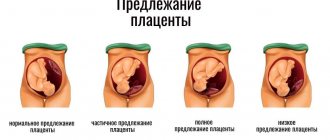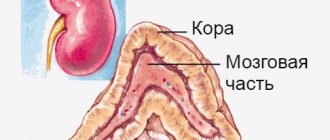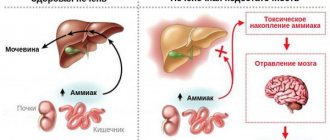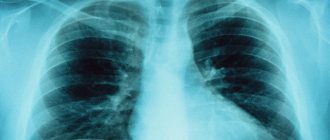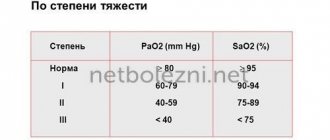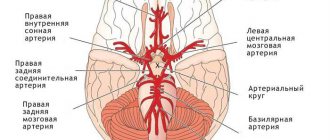Exudative enteropathy with disaccharidase deficiency is associated with congenital or acquired deficiency of enzymes for the hydrolysis (digestion) of disaccharides - lactase, sucrase, trehalase, etc. Disaccharides - milk sugar (lactose), sugar (sucrose), trihalose (mushrooms). In the future, we will look at this condition using the example of intolerance to milk sugar - lactose, which affects up to 30-70% of the world's population. Russian synonyms for this suffering: lactase deficiency, congenital adult lactase deficiency (with delayed onset), hypolactasia, lactose intolerance, lactase malabsorption.
The enzyme lactase is produced in the small intestine. Lactase digests lactose (milk sugar) from milk and dairy products into simple sugars - glucose and galactose, which are absorbed in the small intestine and enter the blood.
Lactose is the main source of energy in the human body and an activator of the nervous system. 5-6% of the population has a congenital deficiency of the lactase enzyme with normal, intact small intestinal mucosa, associated with a congenital gene mutation. Acquired lactase deficiency occurs when the intestinal mucosa is damaged and its synthetic function is impaired, including the production of lactase.
Insulin, thyroid and glucocorticoid hormones, the state of the autonomic nervous system, and nutritional composition have a great influence on the activity of the lactase enzyme in the small intestine.
If there is a lack of lactase enzyme production in the small intestine, lactose (milk sugar) is not digested, passes further through the small intestine and enters the large intestine. There it is exposed to fermentation processes and the action of colon microflora.
And if the cause of lactase deficiency is in the small intestine, then the clinical manifestations of this condition are noted in the colon. With a lack of lactase, unabsorbed milk sugar (lactose) reaches the colon. Under the influence of anaerobic bacteria, it is broken down to form short-chain acids, carbon dioxide, hydrogen and fatty acids. As a result, along the osmotic gradient, water rushes into the lumen of the colon, which leads to the development of osmotic diarrhea and a decrease in the pH of the stool.
Lactase deficiency - causes
The causes of lactase deficiency in adults may be the following:
- inflammatory bowel diseases of bacterial, viral (rotovirus), parasitic (giardiasis) etiology; for example, a rotovirus penetrates the mature cells of the microvilli of the small intestinal mucosa, destroys and rejects them, the mucosal cells cease to form the enzyme lactase, the dysentery bacillus, entering the intestine, produces toxins, causes inflammation throughout the small intestine, multiplies intensively in the ileum and then passes to the large intestine; Giardia lives in the upper small intestine, attaches to the mucosal villi, multiplies, affects the intestinal wall deeper, and disrupts parietal (membrane digestion) by disrupting enzyme production.
- chronic diseases of the stomach, biliary tract, pancreas,
- operations on the gastrointestinal tract,
- endocrine diseases (diabetes mellitus, hyperparathyroidism),
- Whipple's disease is a rare disease of the small intestine;
- gluten enteropathy (celiac disease), with celiac disease the synthesis of all enzymes is disrupted, including lactase, and lactase deficiency occurs, the manifestations of which are significantly reduced by following a gluten-free diet;
- Crohn's disease is a granulomatous enteritis that affects the entire wall of the small intestine in any part of it. Inflammation develops, then scar tissue, and enzyme synthesis stops; damage to the mucous membrane is based on autoimmune mechanisms;
- food allergy - damage to enterocytes (cells of the mucous membrane of the small intestine), it is called allergoenteropathy, which is based on immunoallergic antigen-antibody complexes, the antigen is the food product, and the body produces antibodies; the antigen-antibody complex in cells causes inflammation, the release of neurotransmitters, which leads to damage to enterocytes, and their ability to secrete lactase is impaired;
- bacterial overgrowth in the small intestine;
- lymphoma of the small intestine.
Lactase deficiency - symptoms
The severity of clinical manifestations depends on the degree of lactase deficiency, the amount of milk and dairy products, and the severity of the disease, which is recognized as the cause of lactase deficiency. Thus, when consuming more than 200 ml of milk and dairy products, only 5% of people experience pronounced manifestations of intolerance, 10-12% have clinical manifestations only when consuming whole milk, 60-70% of the population suffer from varying degrees of lactase deficiency, 5-10 % can consume milk up to 200 ml and unlimited fermented milk products.
With significant enzymatic deficiency of lactase, approximately 1 to 2 hours after consuming milk or dairy products, a person may develop a complete picture of lactase deficiency:
- heaviness, bloating, rumbling in the stomach, caused by the breakdown of lactose in the colon and the formation of carbon dioxide and hydrogen;
- pain of a bursting nature, due to increased gas formation and distension of the colon and irritation of pain receptors;
- loose frequent stools - copious, watery, light yellow with a sour odor due to the formation of fatty acids, increased osmotic pressure and the attraction of water into the colon;
- nausea, single vomiting.
In addition to intestinal manifestations, general weakness, rapid heartbeat, sweating, and headache may occur.
Lactose and lactase: what happens to them in the human body?
If we ignore the true allergy to milk protein (most often cow's), then the vast majority of cases of poor milk tolerance are due to the so-called lactase deficiency. What kind of disease is this? Let's start from the very beginning.
In addition to fats and proteins, the milk of mammals (including humans) contains carbohydrates, primarily the milk sugar lactose. Lactose consists of two molecules of simple sugars - glucose and galactose, connected by a special bond. In order for lactose to be absorbed by humans, this bond must be broken. Only then can the resulting simple sugars glucose and galactose be easily absorbed in the small intestine.
The process of bond cleavage inside the lactose molecule is possible only in the presence of a special enzyme - lactase. The names are similar: the enzyme lactase breaks down the milk sugar lactose. This enzyme is located on the surface of the villi of the small intestine.
In humans and most mammals, the activity of the lactase enzyme is maximum after birth, this allows the absorption of large amounts of milk, which in the first months is the only source of food for the newborn. After stopping breastfeeding, lactase activity gradually fades as a person switches to an adult type of diet, where milk and dairy products are only a small part of the diet.
In some people, the decrease in the activity of this enzyme occurs very quickly, in others it is gradual, and a certain part of people maintain high lactase activity for a long time. What does this depend on?
It is known that the ability of lactase to break down the milk sugar lactose is regulated by a special gene. More precisely, two genes. One gene (LCT) encodes the enzyme lactase; without it, it simply could not be produced. The second gene located nearby is called MCM6, and its task is to regulate the activity of the LCT gene.
For example, it is known that the variant (genotype) of the MCM6 gene, designated C/C, is associated with low activity of the LCT gene, which leads to early lactose intolerance. With the T/T genotype, the activity of the LCT gene is high, even in adulthood. The C/T genotype is the most common variant and is most likely to develop lactose intolerance in middle age.
This information is very important because it is now possible to evaluate the MSM6 gene in laboratories.
So, the activity of the lactase enzyme is regulated by the gene; with age, the likelihood of a decrease in this activity increases. What happens to the milk sugar lactose if there is not enough enzyme to break it down in the small intestine? Some of the lactose will still be broken down and absorbed in the small intestine. The remaining undigested lactose molecules will move further through the small intestine and eventually reach the large intestine. During this process, due to high osmotic activity, lactose attracts water molecules, increasing the amount of fluid in the intestinal lumen, which increases the risk of developing diarrhea. Milk sugar that enters the colon is an excellent nutrient substrate for local bacteria, which actively begin to break it down, producing gases. Increased gas formation and bloating are common symptoms in such patients. In addition, people with impaired breakdown and absorption of lactose may experience mild abdominal pain, nausea and other unpleasant symptoms.
To summarize the above: low activity of the lactase enzyme leads to impaired absorption of lactose in the small intestine. lactase deficiency in medicine . Lactase deficiency, which occurs over time in adults, also has a second name - adult hypolactasia. This article will focus on this most common type of lactase deficiency. We will leave aside congenital lactase deficiency (an extremely rare disease of newborns) and secondary lactase deficiency (occurs as a consequence of a number of gastroenterological, infectious and other diseases).
What is the difference between lactase deficiency and milk allergy?
Lactase deficiency is often associated with a food allergy to milk. This is a misconception, because The cause of milk allergy is intolerance to the milk protein - casein, and not to the milk sugar - lactose.
Unlike food allergies, the clinical manifestations of lactase deficiency depend on the amount of product containing milk sugar.
Classification
It is customary to distinguish between primary (hereditary) lactase deficiency and secondary – arising against the background of a general state of enzymatic immaturity. In addition, it can be malignant - with lactosuria and benign - without such a pathological manifestation.
Primary lactase deficiency
Primary - true lactase deficiency is a congenital lactase deficiency, which manifests itself from the first days of life and occurs in approximately 10% of the world's population. The pathology differs in family history - usually at least one adult relative is diagnosed with dairy intolerance, for example, parents, grandparents, and brothers and sisters.
Secondary lactase deficiency
Secondary lactase deficiency is characterized by intestinal dysbiosis and immaturity of the pancreas. Secondary pathology is usually detected in children under 1 year of age or in older adults due to intestinal trauma. At the same time, to eliminate it, it is enough to correct dysbiosis , which promotes normal absorption in the future, although there are known cases of transient (transient) pathology that develops with age.
Diagnosis of lactase deficiency
Diagnosis of lactase deficiency largely depends on the anamnestic data of a person who has had poor tolerance to whole milk throughout his life, and the exclusion of chronic diseases of the gastrointestinal tract, food allergies, chronic enteritis and other causes of the disease.
The following laboratory data should be noted:
- A genetic blood test, gene determination (LCT, LPA) helps to identify lactose intolerance and predict the development of lactase deficiency in children over 1.5 years of age.
- The oldest scatological analysis of stool has not lost its significance, by which it is possible to identify disturbances in the absorption of carbohydrates (sugars): increased starch, fiber, iodophilic flora, decreased stool acidity less than 5.5, determine carbohydrates in stool.
- Glycemic load test with lactose - a test of lactose tolerance. The blood glucose level is determined on an empty stomach and 15, 30 and 60 minutes after a lactose load of no more than 50 g. If the lactase enzyme is insufficient, within 60 minutes after taking lactose, the blood glucose level increases by less than 1.1 mmol/l, i.e. , no more than 20% of the initial level - a flat glycemic curve. The most accurate research method.
- Hydrogen breath test - an increase in the concentration of hydrogen in exhaled air due to bacterial breakdown of disaccharides in the colon. The study is carried out on an empty stomach after a 14-hour fast. Preparation for the study: the patient follows a diet that excludes slowly digested foods (legumes, bran and carbonated drinks). Immediately before and during the examination, smoking and chewing gum are not allowed, and physical activity is limited 2 hours before the examination. Before the first intake of exhaled air, oral hygiene is carried out - teeth brushing. Then the patient is given 50 g of lactose and the hydrogen concentration in the exhaled air is determined every 15 minutes, if the hydrogen concentration is >20 ppm - a criterion for lactase deficiency. In 20% of cases the result is false positive.
- A biopsy of the small intestinal mucosa, revealing a decrease in lactase activity, is the “gold standard”, but is rarely performed.
Differential diagnosis must be carried out with food allergies, pseudoallergic food intolerance, chronic enteritis and other causes of lactase enzyme deficiency.
Symptoms of lactose intolerance in adults
If there is not enough lactase in the small intestine, then lactose is sent to the body in broken down form. As a result, within 20-30 minutes after consuming dairy products a person may have:
- bloating,
- diarrhea,
- pain in the intestines,
- nausea,
- rumbling,
- weakness,
- dizziness.
This is how lactose intolerance manifests itself in adults. This disease is also called “lactase deficiency” (LD).
Treatment of lactase deficiency. Food selection
Treatment consists of eliminating whole milk and dairy products from the diet. Currently, products with a reduced lactose content are produced and labeled “hyla”; products manufactured by Valio, Parmalat, and President are treated with lactase and labeled with the “laktoosition” symbol, most often for children.
Elimination diets (test consumption of individual foods containing milk sugar) are of great importance in both diagnosis and treatment.
If taking any dairy product - whole milk, fermented milk products, cottage cheese, cheese, coffee with cream, butter, etc. causes clinical manifestations of intolerance, if treatment is not effective, and clinical signs disappear without treatment, then we can talk about dairy intolerance sugar, the product should be excluded.
In products that have undergone lactic acid fermentation, when milk sugar turns into lactic acid, there is little lactose and therefore the use of fermented milk products in nutrition is possible (yogurt, fermented baked milk).
Products with live lactobacilli can be well tolerated, which can be done by preparing a live fermented milk product at home using starter cultures - Narine or Evitalia.
The amount of lactose in a dairy product is inversely proportional to its fat content, so there is practically no lactose in butter, and heavy and half-fat cream contains less lactose than whole milk.
When making some hard cheeses (cheddar, Parmesan, Swiss), the whey, where lactose is concentrated, is separated. Therefore, lactose-poor cheeses are suitable for consumption by lactose intolerant people. But homemade cheese and soft cheeses are rich in lactose.
Products containing lactose should be divided into several doses throughout the day.
Lactose-free products include fruits, vegetables and their juices, cereals, honey, butter, rice, vermicelli, meat, fish, poultry, chicken eggs, salt, nuts.
Prevention of lactase deficiency
To prevent this disease, it is necessary to prevent the symptoms of hypolactasia. This is done using a diet with a complete absence of lactose or low content. Therefore, if a patient experiences digestive disorders after eating unfermented dairy products, it is necessary to conduct a genetic test for lactase activity: it will allow you to choose a suitable diet and avoid attempts at pointless treatment. Using this test, you can also predict lactose intolerance in children in order to avoid unexpected intestinal disorders.
Hidden lactase
ATTENTION!
To improve the structure, taste and other properties, lactose is often used in the manufacture of food products. It is “hidden” in dry milk formulas, bread, frozen vegetables, canned soups, dressings and sauces, spaghetti, sausage, jam, sweets, instant foods, fast food, ketchup, mayonnaise, chocolate (except bitter). Read the product ingredients!
Milk sugar (lactose) is an auxiliary component of many drugs, for example, Ganaton, Gastal, Motilium, Cerucal, Imodium, Karsil, Linex, No-shpa, Kvamatela, Dulcolax, Gelusil, Galstena, Wobenzym, Mexidol, Corvalol, Warfarin, Bilobil, Panzinorm -forte, Omeza, and other drugs. Read the annotations for medications! Considering that lactase deficiency is based on a deficiency of the small intestinal enzyme - lactase, there are currently drugs that perform a replacement function for the lack of this enzyme. Dietary supplements Lactase, Lactazar can be taken 1 capsule along with a dairy product and help digest milk sugar, Tylactase taken 1 capsule with food or 2 capsules added per 1 liter of milk, store in the refrigerator, Lactrase 1-2 capsules before taking dairy products.
Forecast. If lactase deficiency is congenital, elimination diets are beneficial. In acquired variants of lactase deficiency, the course of the underlying disease that caused this type of enteropathy is important.
Drugs to treat the disease
The main drugs for this pathology are enzymes. Enzyme replacement therapy is carried out under the guidance of a doctor to select the correct dose. The following medications are prescribed:
- Laktazar
(340 rubles) - contains 700 units of lactase, one capsule is added to 100 ml of breast milk, formula; - Lactase Baby
(580 rubles) - one capsule is dissolved in warm milk (100 ml), given to the child after 2-3 minutes; - Baby doc lactase
- comes in drops, use 10 drops per 3 tablespoons of milk, then breastfeed.
After introducing complementary foods, the child may need pancreatic enzymes (Creon, Festal), probiotics for the intestines (Hilak Forte, Linex). For severe bloating, they give the baby Espumisan-baby, Bobotik. Typically, improvement from therapy is observed by 3-4 days. In most children, lactase deficiency goes away by the age of one year.
